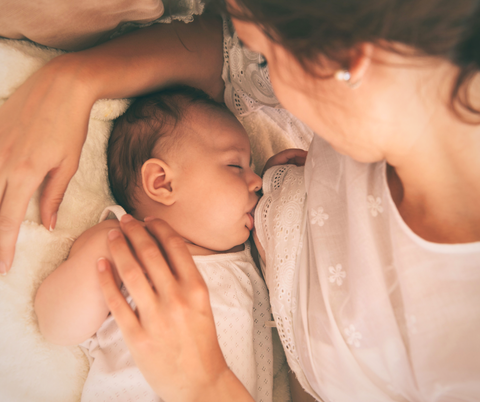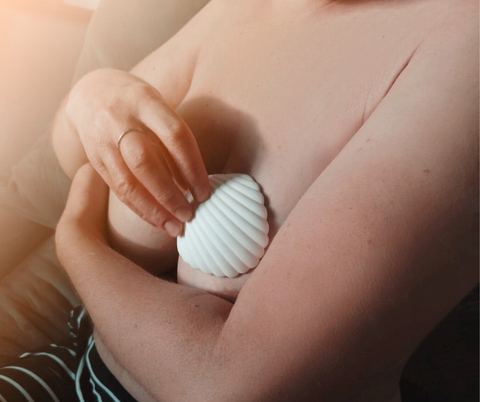Caring For Your Breasts While Breastfeeding

Congratulations! You’ve given birth to a beautiful baby after what has felt like a very long and exhausting pregnancy. It is vital that you take care of your body as you undergo the journey of motherhood – especially if you are breastfeeding your little one! We at Haakaa have compiled this guide to help those mamas – particularly first-time ones – look after their adjusting postpartum bodies and milk supply so they can better care for their young ones.
How do my breasts change after I start breastfeeding?
It’s normal for breasts to become larger and feel heavier during the first few days after birth. You may experience warmth, tenderness or throbbing, and your breasts and nipples will feel harder to touch. This is called engorgement and occurs as a result of an increased blood supply being directed to your breasts, to help your body to produce milk. To help reduce engorgement, you might want to empty your breasts through feeding or pumping. You can use a warm washcloth to soften the breast if it is too hard before your child latches on for feeding. You may also apply a cold compress once you have finished feeding to reduce inflammation and pain.
Top tip: The Haakaa Generation 3 Silicone Breast Pump is super handy for those looking to express milk to help reduce engorgement, without having to wake up your bub for a feed. Our Generation 3 Pump allows you to express directly into a detachable silicone container which you can then use as a baby bottle when the time for feeding does come around! Simply twist off the breast pump flange and switch to the Anti-Colic Nipple to feed your bub your expressed milk when you’re ready.

When you start breastfeeding, your nipples grow larger and become more sensitive. This can create new and strange sensations, especially for first-time mothers, when your baby starts feeding from them. Breastfeeding sessions can take a long time (up to one hour!), and your baby may feed up to 13 times a day. As a result, it is not uncommon for your nipples to feel sore when you start breastfeeding! Your body should soon become accustomed to this within the first few weeks. If the nipple soreness continues for a prolonged period, this may be an indication of feeding incorrectly – perhaps your baby is not latching on properly or is in an incorrect position for feeding. If the nipples start to crack, bleed or are unbearably sore, seek professional advice from a lactation consultant or a breastfeeding specialist.
How do I treat sore and dry nipples from breastfeeding?
Sore and dry nipples are prevalent amongst all mamas when breastfeeding and there’s absolutely no shame in it at all! To take care of irritated or dry nipples after feeding, make sure you let them air-dry or dab at them gently with a towel. You can rub a few drops of your own breast milk onto your nipples for relief, or alternatively, use an ultra-pure lanolin nipple cream. These creams moisturise, soothe and promote healing of the nipple. It is completely harmless for the baby as well, making it ultra-safe to use. When washing yourself, be sure only to use warm water to keep the breasts and nipples clean – do not use soap. This is because the little bumps on the areolae, called the Montgomery glands, release natural oils to keep the nipple and areola clean & moisturised. Using soaps will strip these beneficial oils away.

How do I unclog a plugged milk duct?
Plugged milk ducts may also occur during the period of breastfeeding. These can arise if the breast is not emptied entirely after feeding, and will cause painful lumps. Sometimes your baby may finish feeding before your breast is empty, which is fine! In this case you can use a pump to get the remaining breast milk out and save it for later. If you do get plugged milk ducts and painful lumps, you can try to unplug the ducts by massaging or gently squeezing the breast. You should not wear any tight bras or tops as they can put too much pressure on your breasts.
What can I do to relieve mastitis?
Mastitis is an infection that can come from a clogged milk duct or bacteria entering the breast. It will cause your breast to become sore and you to have flu-like symptoms. If unfortunately, you do get mastitis, you should consult a doctor who can prescribe you antibiotics. It is also important during this time to keep breastfeeding your child to empty the breast, which can help the healing process. Use a warm compress before feeding to assist milk flow and a cold compress afterwards to soothe the breast.
How do I stop my breasts from leaking?
A lot of mothers may experience leaking breasts and unwanted let-down when they are not feeding or pumping. When this happens, many opt to use nursing pads to catch any potential leaks as they are absorbent yet discreet. It is essential to change these nursing pads often, as when they become damp, they can create an environment for yeast and fungal infections to grow, which can cause thrush and other conditions.

How can my baby latch if I have flat or inverted nipples?
There may also be a proportion of mothers with flat or inverted nipples. Fortunately, this does not affect your ability to supply milk, but it can make it more difficult for the baby to latch. Fear not! While you can try to compress your areola while feeding to help your baby, another solution is to use our Silicone Inverted Nipple Aspirator. This will gently pull your nipple outwards using the natural power of suction before feeding, making it less of a struggle for your baby to latch on.
How can I prevent issues when breastfeeding?
One of the most important things to do to prevent issues when breastfeeding is to make sure the baby is latching on correctly. You can help them by aiming the nipple towards the roof of the mouth when latching, which will allow them to get as much of the areola in their mouth as possible. Having both the nipple and some of the breast tissue in their mouth will help them feed properly. Gently break the suction between them and your breast if you want to remove them from the breast.
Our Breast Massager has been specially designed to help breastfeeding mothers prevent a lot of common issues like plugged milk ducts and mastitis. The massager replaces traditional hand-compression techniques to provide relief to engorged breasts, as well as to improve milk flow and encourage faster let-down. With this breast massager, you can worry less about breast care and focus more on the bonding experience with your baby.

If you have sore, dry nipples that need some time to recover but you still need to breastfeed, you may consider using Haakaa’s Silicone Nipple Shields. These can help mamas with a variety of things, including latching problems or just providing an opportunity for the nipple to heal in the early stages of breastfeeding. These nipple shields are made of super-thin and super-soft silicone, allowing for more skin contact between mother and baby. This further encourages the bond between you and your child.
Continue to check your breasts regularly with self-examinations. Your breasts may feel lumpy when they’re full of milk, but these should go away with breastfeeding, pumping or massaging. We advise you to consult with a doctor if you notice any lumps that do not go away on their own within a few days. Finally, make sure you taking care of yourself by eating, staying hydrated and resting well. If you want to provide care to your baby, you need to stay in good health yourself!




